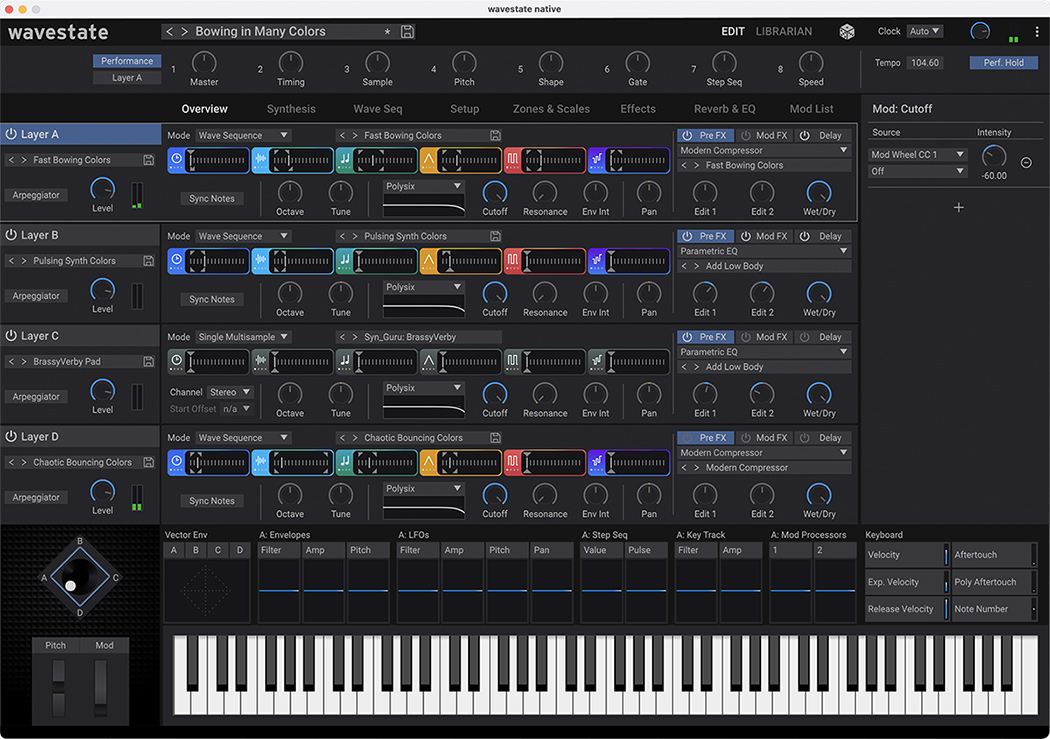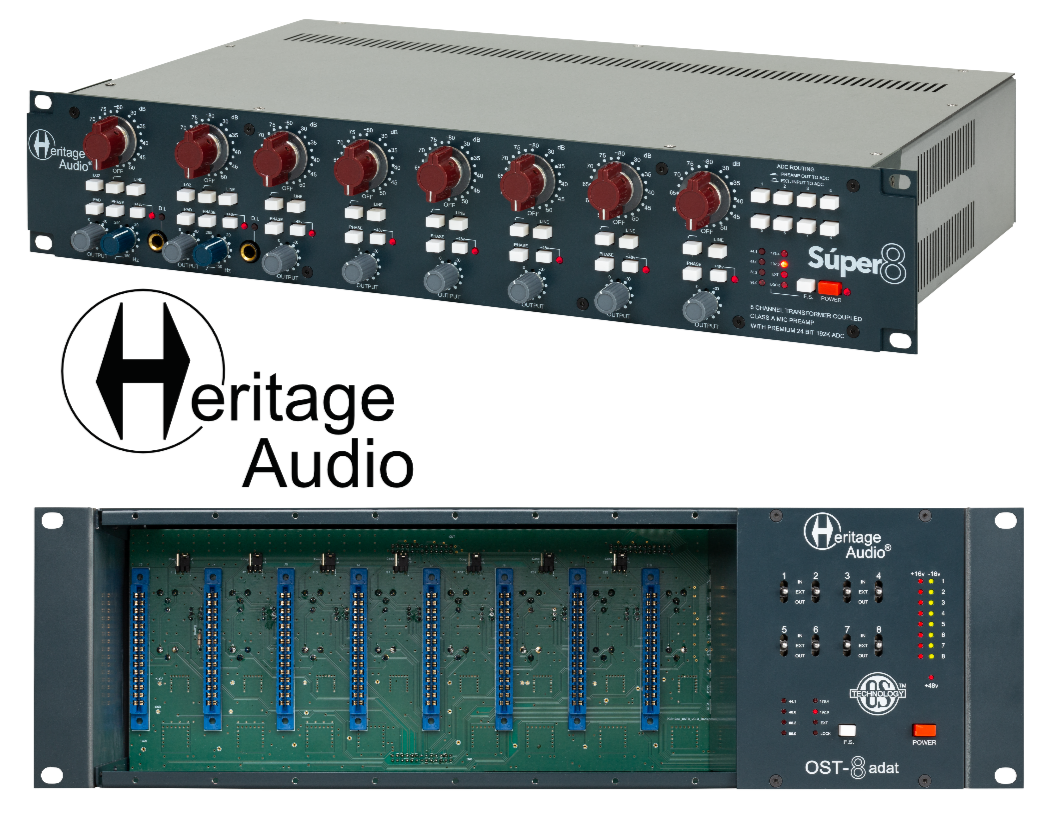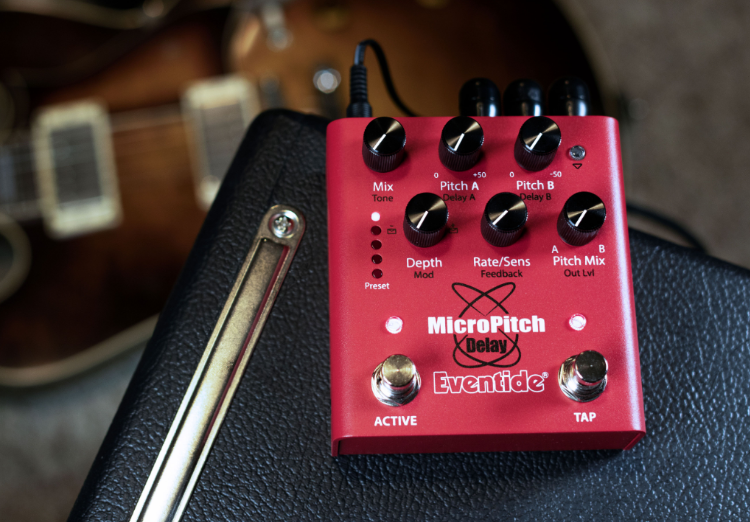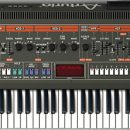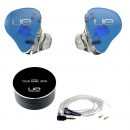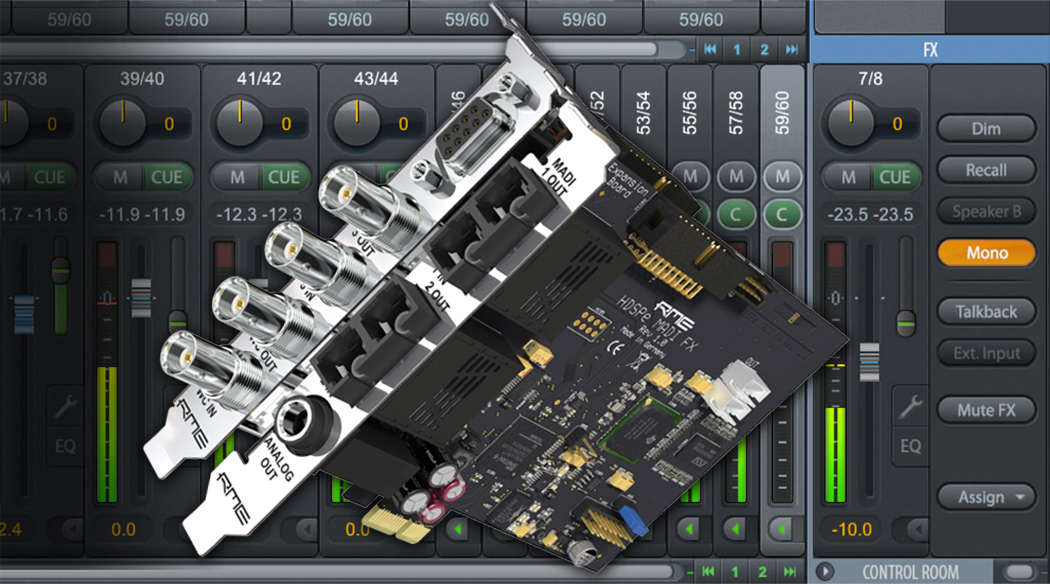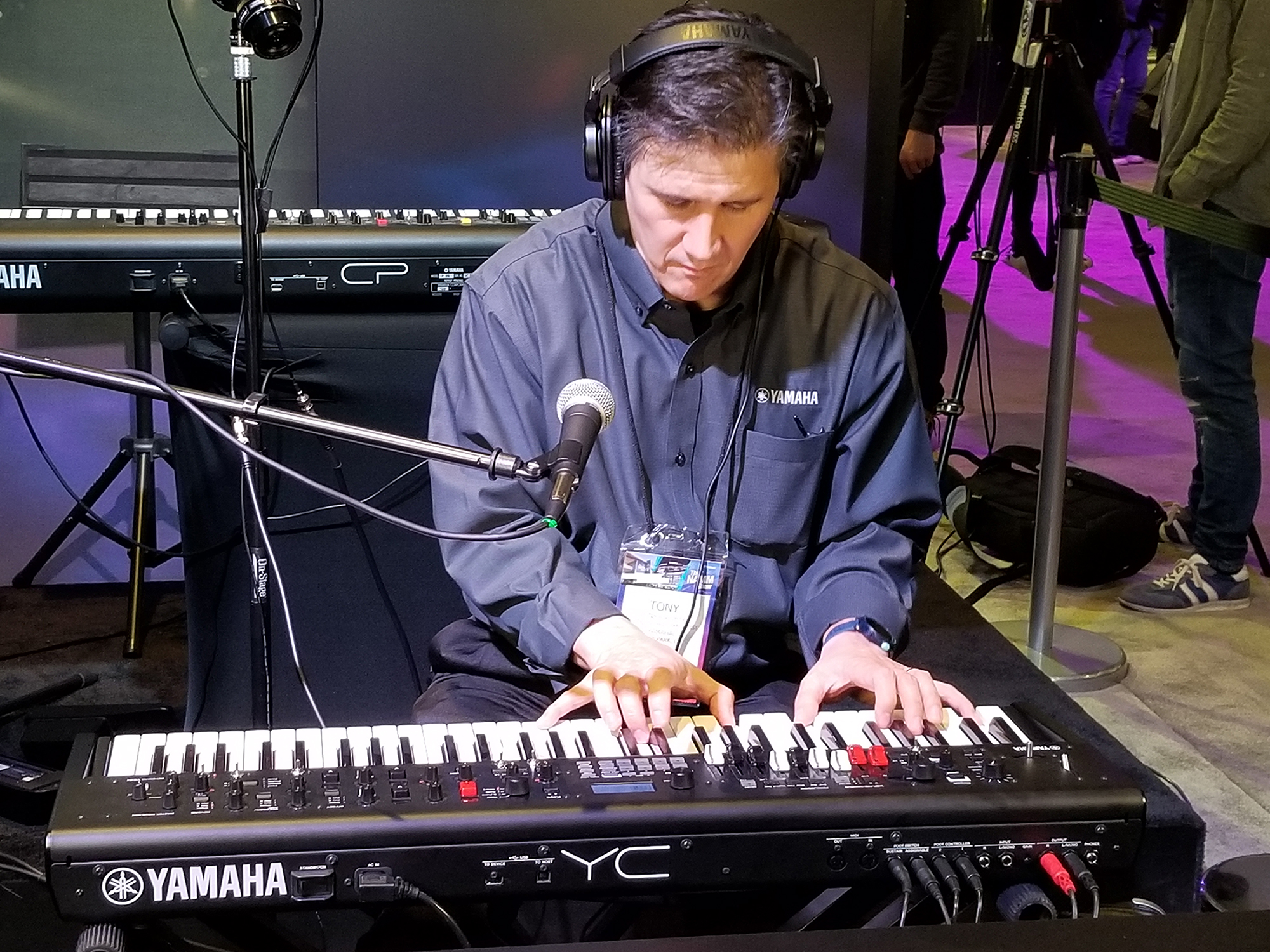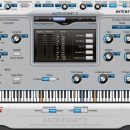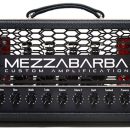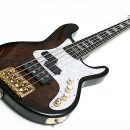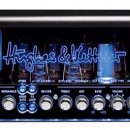Gibson has been expanding beyond its guitar lines lately, with its high-profile acquisition of Mesa Boogie amplifiers kicking things off just a few years ago. It was only a matter of time before the company got into the pedal market, and in this case, have reintroduced the Maestro pedal brand and a variety of pedals along with it.
Introducing new pedals into what some would consider an oversaturated market is tricky at best. Along the lines of Gibson going back to its core and focusing on the guitars that made it what it is, reinvigorating a historical pedal brand seems like a good move as well. Rather than just recreate the original Maestro pedals, though, Gibson created new pedals inspired by some of the originals but with modern features and a uniform design and simplicity. Remember that song, “Satisfaction,” by a little-known band called The Rolling Stones? Well, that was the original Maestro Fuzz-Tone FZ-1 behind Keith Richards’ tone. Maestro reportedly created the world’s first fuzz pedal.
On tap for review are the first batch of new Maestro pedals including Ranger Overdrive, Invader Distortion, Fuzz-Tone FZ-M, Discoverer Delay, and Comet Chorus. Sonic sculptors, your palette awaits you.
Features
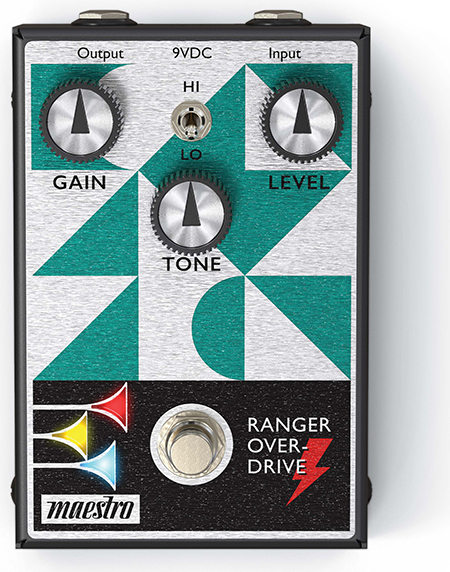 All pedals in this line are true bypass and have a three knob layout, a single on/off button, all-analog circuitry, a mode toggle switch that differs with each pedal, and internal trims inside some of the pedals that offer additional configurable options.
All pedals in this line are true bypass and have a three knob layout, a single on/off button, all-analog circuitry, a mode toggle switch that differs with each pedal, and internal trims inside some of the pedals that offer additional configurable options.
Each pedal has top/rear-mounted input and output jacks and an on/off LED in the lower left of the pedal within the Maestro bugle tri-color logo. All pedals are 2.5” x 3.45” x 5.04” and are housed in a rugged metal case with a slightly angled top making them easy to stomp on. The pedals require either a 9V battery or a 9V DC power supply and will work with most pedalboard power supplies. Optionally running the overdrive pedal at 12V yields increased headroom.
The Ranger Overdrive includes intuitive gain, tone, and level knobs. The Hi/Lo mode toggle switch switches between a warm, expressive, amp-like overdrive and a slightly cleaner and more touch-sensitive tone.
The Invader Distortion is high-gain distortion that includes three intuitive gain, tone and level knobs while the toggle switch switches the noise gate between Gate On and Gate Off. This pedal also includes an internal trim pot mounted on the circuit board that allows fine tuning of the noise gate’s threshold.
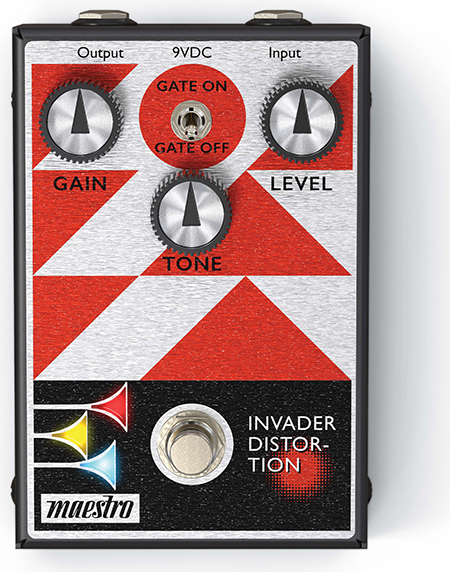 The Fuzz-Tone FZ-M is based sonically on the world-famous first fuzz pedal, the Fuzz-Tone FZ-1. This pedal includes an attack, tone and level knob and the toggle switch toggles between the classic FZ-1 tone and a thicker, more modern fuzz tone. The attack knob controls the amount of fuzz. There is no internal trim pot on this pedal.
The Fuzz-Tone FZ-M is based sonically on the world-famous first fuzz pedal, the Fuzz-Tone FZ-1. This pedal includes an attack, tone and level knob and the toggle switch toggles between the classic FZ-1 tone and a thicker, more modern fuzz tone. The attack knob controls the amount of fuzz. There is no internal trim pot on this pedal.
The Discoverer Delay utilizes bucket brigade device technology to deliver classic, warm, and inviting delay sounds. The pedal includes a delay knob, mix knob, and a sustain knob. The delay goes from 20 ms to 600 ms while the mix knob lets you control how much delay you have in your mix. The toggle switch engages a built-in modulation that applies anything from a slightly saturated, tape-like wow and flutter effect to a heavily pitch-shifted modulation effect to the delayed signal. There are two internal trim pots on this pedal which control the rate and width of the modulation.
The Comet Chorus includes a depth, mix and speed knob and a toggle switch that toggles between “Earth” mode, which is a more classic shimmering chorus effect, and “Orbit” mode, which is a wider, rotary speaker or vibrato-like effect. The depth knob controls the depth of the chorus by introducing more pitch variation as it is turned up going from more of a doubling type of effect to lush 3D chorus. The speed knob controls the speed of the low frequency oscillator and the rate of chorusing pitch modulation. The mix knob controls the blend of the wet and dry signal. This pedal includes one internal trim pot to control the level of the rotary speaker Orbit effect. With the trim increased you get more of a tremolo type of effect.
Usability
Each of the pedals are colorful and come well packaged. The pedals themselves are all built like tanks in their rugged, black metal casing. To access the battery compartment and trim pots, you simply loosen four screws on the bottom of the casing to open the hinged rear. Using trim pots inside for certain features reduces the need for extra space on the pedal itself and keeps the pedals to a more user-friendly size. The downside is that you have to find the trim pots settings that you like and leave them there rather than being able to change them on the fly, but we like that if you take a few minutes to dial things in to taste, you effectively have a custom modded pedal on your board that doesn’t sound exactly like your friend’s pedal. The three overdrive, distortion and fuzz pedals complimented each other well with little overlap to really cover a wide variety of dirty tones.
Sound
Once these pedals arrived, we were eager to hear if the buzz about these pedals was genuine or just hype. We went down the line from the overdrive to the distortion to the fuzz and finally ending with the chorus and delay pedals. We tested the pedals with various guitars with single coils, humbuckers, P90s, and Jazzmaster pickups, mostly through a very clean Roland Jazz Chorus JC 120-style amp as well as with a Fender Tweed -tyle amp and a Marshall-style amp.
Ranger Overdrive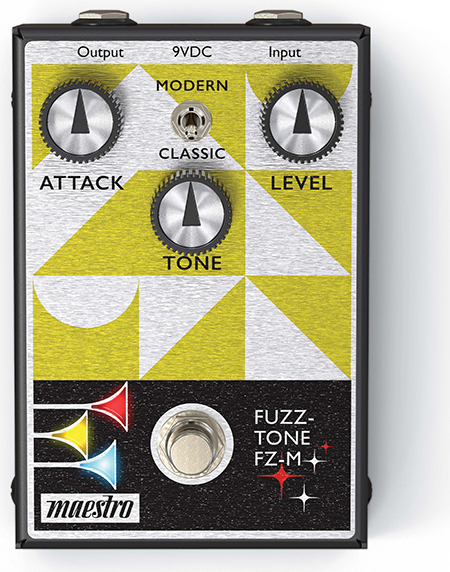
The overdrive is a great, touch-sensitive, transparent overdrive that can add just the right amount of secret sauce to your sound and be the always-on pedal or give you just enough of a clean boost on demand. Or, you can crank it and get into sizzling distortion that is very different from the Invader Distortion. It did not color the tone of our guitar at all at lower gain and cleaned up nicely with our guitar volume knob. Between the two modes, Hi/Lo, we were able to run the gamut of tones from just a little clean boost to bluesier tones to more rock sounds that would cover most tones that don’t specifically call for high gain. It also functioned great as an always-on pedal that seemed to add just a touch more pizzazz to our clean tones that made them sparkle just a little more.
Invader Distortion
Next up was the Invader Distortion and its name says it all. From this pedal, you get all the juice you need for any type of high-gain tone. Adjusting the gain took us from heavy crunch into hard rock and modern high-gain metal zones and completely changed the tone of our guitar. Cranked all the way got us into some fuzz territory (and not subtle fuzz). Adjusting the level allowed us to maintain unity gain or boost our sound. Adjusting the tone control helped get the sound to sit well in a mix when using different guitars.
Overall this was a quiet pedal with little background noise, but with the added noise gate, we were able to reduce some of our single-coil hum as well as get more of the staccato high gain attack tones with the trim pot turned up. The pedal is aggressive but articulate and responds well to pick attack and rolling back the volume on the guitar. The trim-pot under the hood allowed us to adjust how much we wanted that gate to work from subtle to more abrupt.
Fuzz-Tone FZ-M
It was now time for the pedal that started it all, the Fuzz-Tone. This one is a modern take on the original that allowed us to get those classic fuzz tones but also more saturated fuzz. That being said, it wasn’t a crazy wild fuzz like some fuzz pedals are nowadays. There are germanium and silicon based fuzz pedals and they all sound different. Sometimes you want both. This one is silicone based, so the tone won’t change with ambient temperature fluctuations like vintage designs. The option of being able to switch between classic and modern fuzz tones really covered a broad spectrum of fuzz tones. Comparing it to some of our other fuzz pedals, there was a little more balance between the fuzz tone and the overall tone of our guitar.
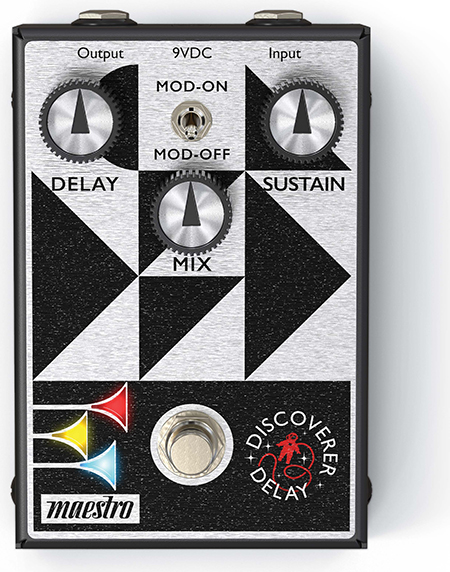 If you listen to “Satisfaction” by The Rolling Stones, the guitar sounds more like a cleaner tone mixed with the fuzz and it doesn’t have crazy sustain. With lower attack and neutral tone, it sounded like more of a “fuzz boost,” getting that fuzz tone but not all out crazy. Switching to Modern and adjusting the attack, tone and level got into more wild territory. Being able to switch from bright and raspy to warm and wooly fuzz tones made this pedal very versatile. Also, stacking it with a boost or overdrive after or into a dirty sounding amp achieved more of a long sustain, heavier fuzz tone. But in any setting, it cleaned up nicely from dialing down the volume knob on the guitar while still providing a little fuzz tone. Also, decreasing the tone knob on the guitar removed some of the higher frequencies when we wanted a smoother tone. That being said, how often do you have just the fuzz tone you want, then you're playing a gig or band practice and you stomp on the fuzz pedal and boom, you don’t know where your guitar went - lost in the mix somewhere. So having some of the higher and mid range frequencies in there is important for not losing your tone when you engage the fuzz pedal.
If you listen to “Satisfaction” by The Rolling Stones, the guitar sounds more like a cleaner tone mixed with the fuzz and it doesn’t have crazy sustain. With lower attack and neutral tone, it sounded like more of a “fuzz boost,” getting that fuzz tone but not all out crazy. Switching to Modern and adjusting the attack, tone and level got into more wild territory. Being able to switch from bright and raspy to warm and wooly fuzz tones made this pedal very versatile. Also, stacking it with a boost or overdrive after or into a dirty sounding amp achieved more of a long sustain, heavier fuzz tone. But in any setting, it cleaned up nicely from dialing down the volume knob on the guitar while still providing a little fuzz tone. Also, decreasing the tone knob on the guitar removed some of the higher frequencies when we wanted a smoother tone. That being said, how often do you have just the fuzz tone you want, then you're playing a gig or band practice and you stomp on the fuzz pedal and boom, you don’t know where your guitar went - lost in the mix somewhere. So having some of the higher and mid range frequencies in there is important for not losing your tone when you engage the fuzz pedal.
Comet Chorus
The basic idea of a chorus pedal is to thicken and add lush color to your sound. The textured effect is intended to make you think there is a “chorus” of guitars playing. But sometimes you don't want your tone too thickened or too colored and the features on this pedal allowed just for that. The Earth setting really was more of a warm Univibe type of sparkly chorus sound while the Orbit setting gave much more of that Leslie speaker/throbbing type of effect. Because of the combination of three knobs, getting those sounds to sit just to our liking was no problem. Often, chorus pedals do not have a mix knob, it's either on or off and you can't really control how much effect you want in your sound. If you want some of that sound but not have it be overwhelming then you have the Depth and Mix knobs to adjust how much you want. With the speed knob all the way down, the chorus effect was minimal and hard to notice, but at lower levels with more depth gave more of that classic ‘80s chorus sound.
Turning the speed knob all the way up got us into more crazy tones, but we curtailed that with the mix knob. One thing we noticed is that there was a boost past unity gain as we increased the wet mix past 2:00-3:00. Even with the mix knob at a setting with no volume boost, it was a perfect blend. We also liked that the chorus did not really color our baseline tone. Some chorus pedals can be a bit wild and sometimes that's what you want. But this chorus really kept the overall tone of the guitar and amp intact. We also noticed some noise with the chorus pedal which persisted regardless of the guitar, amp, or cable we were using.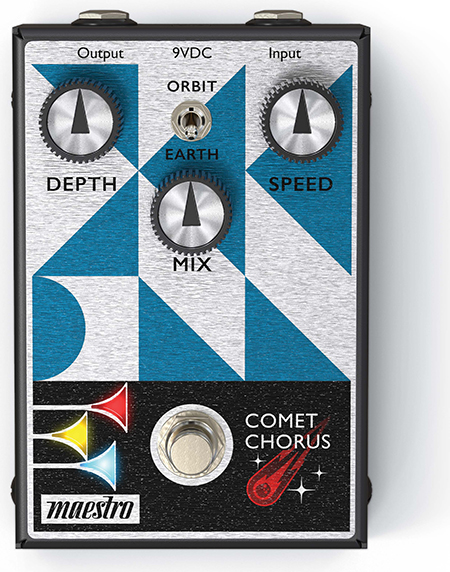
Discoverer Delay
Last but certainly not least, it was time to finish out the modulation effects and test the delay. There are analog and digital delay pedals, and each has its advantages. This is an analog delay pedal, so there was the expected degradation of the sound with each repeat. Some artists like to have a little delay on at all times and with this pedal it was easy to achieve that sound that thickens your sound but remains very subtle in a mix. One of the big selling features on this pedal was having the mix knob. Often you are adjusting the sustain and rate to get the right amount of delay but can’t really control how much delay there is with your overall tone and sometimes delay pedals really color your sound. The mix knob allowed for maintaining the overall tone of our guitar while adding just the right amount of delay. With the mix all the way down there was no delay at all. With the mix dialed up just a little bit it was perfect for that always on delay that is subtle but adds just the right amount of sauce to our sound with added depth. But if wild is what you are going for, that was surely feasible as well.
Engaging the modulation switch gave us classic mod delay sounds, with chorus added to the sound of our repeats. But playing around with the internal pots we were able to achieve some very interesting sounds to say the least.
Gibson has created demo videos for each of these pedals:
Ranger Overdrive
Invader Distortion
Fuzz-Tone FZ-M
Comet Chorus
Discoverer Delay
Documentation and Product Support
Each pedal came with a Maestro sticker and a small manual with the instructions and warranty. The pedals are fairly straightforward, but the manuals were useful in explaining the trim pots on the pedals that have them.
They each include a three-year parts and labor warranty. We could not find copies of the manuals on the Maestro website, so don’t lose these.
Price
The Maestro Pedals Original Collection is designed by Gibson and manufactured in China. Each of the pedals sell for $149 except for the Discoverer Delay, which is $159. We think this is a fair price given the build and sound quality.
Contact Information
Maestro Electronics
www.maestroelectronics.com




